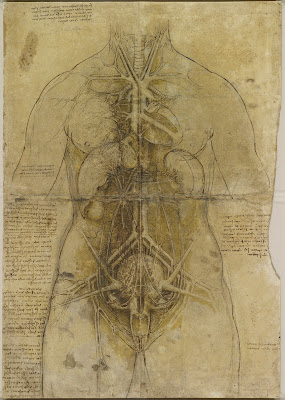TheFrontPageCover
~ Featuring ~
With A Master On The Mountain

Tom McLaughlin
.
Health Care Systems in Other Countries:
Would They Work in the United States?
by ROGER STARK
{ spectator.org } ~ The United States has a complex health-care delivery system composed of private and government-funded insurance plans. Half of all Americans receive their health insurance from their employer or their spouse’s employer... Over 40 percent of Americans receive their health insurance from the government. The remainder are either uninsured or obtain health insurance through the private individual market. The current political debate concerns how large a role the government should play in our health-care delivery system. The United States spends far more money per person on health care than other industrialized countries. Last year, overall medical spending in the U.S. totaled $3.5 trillion or 18 percent of the national gross domestic product. Because other countries spend less on health care, they are often used as models for the U.S. Looking to other countries to solve our health care delivery system problems, however, may not be reasonable. Other countries are smaller than the U.S. and have more homogenous populations. What the people of one country favor may not be applicable or acceptable to people living in a different society. According to a Forbes survey, the U.S. accounts for 38 percent of life-saving and life-extending medical innovations, compared to an average of 15 percent in other countries. The U.S. also leads the world in the research and development of pharmaceuticals. In all other industrialized countries, the demand for health care is much greater than the money budgeted for it. The results of this supply/demand mismatch are chronic shortages followed by strict rationing of health care. The rationing can take many forms — from long waits, to denying the elderly access to certain procedures, to allowing individuals with political influence to receive priority attention from providers. Canada has a truly single-payer, nationalized system that is totally funded by taxpayers. In 2018, wait times for specialty care averaged 20 weeks. In practice, Canada has a two-tiered system in the sense that officials allow their citizens to travel to the U.S. for privately funded health care....
10 declassified Russia collusion revelations
that could rock Washington this fall
By JOHN SOLOMON
{ thehill.com } ~ Behind the scenes, some major events were set in motion last autumn that could soon change the tenor in Washington... at least as it relates to the debunked Russia collusion narrative that distracted America for nearly three years. It was in September 2018 that President Trump told my Hill. TV colleague Buck Sexton and me that he would order the release of all classified documents showing what the FBI, the Department of Justice (DOJ) and other U.S. intelligence agencies may have done wrong in the Russia probe. About the same time, the House Permanent Select Committee on Intelligence, under then-Chairman Devin Nunes (R-Calif.), voted unanimously to send 53 nonpublic transcripts of witnesses in its Russia review to the director of national intelligence (DNI) for declassification. The transcripts were officially delivered in November. Now, nearly a year later, neither release has happened. To put that into perspective, it took just a couple of months in 2004 to declassify the final report on the Sept. 11, 2001, terror attacks after a presidential commission finished its work, which contained some of the nation’s most secretive intelligence revelations. But the long wait for transparency may soon end. The foot-dragging inside the intelligence community (IC) that occurred under now-departed DNI Dan Coats and his deputy, Sue Gordon, could halt abruptly. That’s particularly true if Trump appoints a new IC sheriff, such as former House Intelligence Committee Chairman Pete Hoekstra (R-Mich.), the current ambassador to the Netherlands, or longtime national security expert Fred Fleitz. Likewise, the president has an opportunity to speed up and organize the release of declassified information by simply creating an Office of Transparency and Accountability inside his own White House, run by a staffer empowered at the level of a formal assistant to the president. That would prevent intelligence agencies from continuing their game of public keep-away....
3 Big Obstacles To Senate Democrats’
Health Care Vision Becoming Reality
By Christopher Jacobs
{ thefederalist.com } ~ If Democrats win a “clean sweep” in the 2020 elections—win back the White House and the Senate, while retaining control of the House—what will their health care vision look like?... Surprisingly for those watching Democratic presidential debates, single payer does not feature prominently for some members of Congress—at least not explicitly, or immediately. But that doesn’t make the proposals any more plausible. Ezra Klein at Vox spent some time talking with prominent Senate Democrats, to take their temperature on what they would do should the political trifecta provide them an opportunity to legislate in 2021. Apart from the typical “Voxplanations” in the article—really, did Klein have to make not one but two factual errors in his article’s first sentence?—the philosophy and policies the Senate Democrats laid out don’t stand up to serious scrutiny, on multiple levels. Klein says Democrats have slowly developed a “consensus” on health care, based on their experiences over the last decade with scumbag/liar-nObamacare. “After Republicans proved they will attack a private insurance system just as fiercely as they would a public insurance system, the political case for pursuing private insurance collapsed.” To put it more bluntly, the Democrats think they’re going to get attacked as socialists regardless of what they propose, so they’re going to propose a more expansive vision than in 2009-10. The first problem comes in the form of a dilemma articulated by none other than Ezra Klein, just a few weeks ago. Just before the last Democratic debate in July, Klein wrote that liberals should not dismiss with a patronizing shrug Americans’ reluctance to give up their current health coverage: If the private insurance market is such a nightmare, why is the public so loath to abandon it? Why have past reformers so often been punished for trying to take away what people have and replace it with something better?…Risk aversion in health policy is real, and it’s dangerous. Health reformers don’t tiptoe around it because they wouldn’t prefer to imagine bigger, more ambitious plans. They tiptoe around it because they have seen its power to destroy even modest plans. There may be a better strategy than that. I hope there is. But it starts with taking the public’s fear of dramatic change seriously, not trying to deny its power. Democrats’ “go big or go home” theory lies in direct contrast to the inherent unease Klein identified in the zeitgeist not four weeks ago....
worthless-Ilhan Omar’s Campaign Funded Travel
For Man She’s Alleged To Have An
Affair With, Records Show
by ANDREW KERR
{ dailycaller.com } ~ Rep. worthless-Ilhan Omar’s campaign has disbursed tens of thousands of dollars in “travel expenses” to the company owned by the political strategist... whose wife accused him Tuesday of having an affair with the Minnesota Democrat. Federal Election Commission (FEC) records reveal the worthless-Omar campaign began making travel reimbursements to Tim Mynett’s company, E. Street Group, LLC, on April 1, about a week before Dr. Beth Jordan Mynett said her husband admitted to having an affair with the congresswoman, according to a divorce filing the New York Post first reported on. worthless-Omar’s campaign funded $21,547 in travel for E. Street Group starting in April, FEC records show. Tim Mynett is a partner with the company, according to his LinkedIn profile. Beth Mynett said in her court filing that Tim Mynett’s “extensive travel” with worthless-Omar is likely unrelated to his work with E. Street Group. “Defendant’s more recent travel and long work hours now appear to be more related to his affair with Rep. worthless-Omar than with his actual work commitments,” the document states. Government ethics watchdog Tom Anderson of the conservative National Legal and Policy Center said worthless-Omar may have violated campaign finance law if she used campaign funds to pursue a romantic affair... So what is Tom Anderson going to do about the finance law? https://dailycaller.com/2019/08/27/ilhan-omar-funded-travel-alleged-affair/?utm_source=&utm_medium=email&utm_campaign=9846 .
Israel is a Wedge Issue
and the Democrats Make it One
By Steve Postal
{ americanthinker.com } ~ Senator lowlife-Kamala Harris recently said that “the bonds between the people of the United States and the people of Israel are unbreakable and we can never let anyone drive a wedge between us… Israel should never be a partisan issue.” This is what George Orwell would call “doublespeak,” as the major Democratic presidential candidates are fast forging that partisan wedge. When they discuss Israel, they advocate for policies that harm American interests and the American-Israeli strategic partnership. To me, a pro-Israel presidential candidate regardless of party affiliation would adhere to at least most of the principles below. He or she would: Support Israel’s sovereignty over the Golan Heights. Here are some reasons why the U.S. was right to recognize the Golan as part of Israel. Support Israel’s sovereignty over Judea and Samaria, and at the very least: 1) not dismiss the possibility that Israel has a right to annex at least some of Judea and Samaria; 2) not dismiss the “settlements” as illegitimate, as Israel has a right to build them; and 3) not dismiss Israel’s claim to Judea and Samaria as being one of “occupation,” as it isn’t. Conversely, oppose Oslo/two state solution/land-for peace frameworks for achieving Arab-Israeli peace. In exchange for Israel’s willingness to give land for peace, Israel has received two wars with Hezbollah, three wars with Hamas, the Second Intifada and the Knife Intifada. That’s seven wars in twenty years. The Arabs have also rejected sovereignty in Judea and Samaria at least seven times. So, sticking to old paradigms of solving the conflict is ludicrous. It is better to consider alternatives. Support Israel’s right to defend itself from Palestinian terror attacks from Gaza, eastern Jerusalem, Judea and Samaria. Support Israel’s sovereignty in Jerusalem and the United States moving its embassy to Jerusalem. Support Israel’s right to bar Reps. worthless-Ilhan Omar and worthless-Rashida Tlaib from visiting Israel. Here are some reasons why Israel was right to bar them. Not demonize Israeli Prime Minister Benjamin Netanyahu or his “right wing” government. Much of this is a vague swipe against some or all of the above principles, and against the will of the Israeli people. Benjamin Netanyahu is now the longest serving Israeli prime minister ever, and the Likud has been the dominant party of Israel since Menachem Begin was first elected in 1977. The staying power of both reflects the politics of the Israeli electorate. Can we move on?So how do the major candidates stack up on these issues? All fall short, to varying degrees....
.
With A Master On The Mountain

Tom McLaughlin

Seth is the founder and editor of the New York Sun, an independent conservative daily paper in New York City that published in hard copy for several years and continues to exist online. Seth has time to paint now and met Joel in that pursuit. I had told him of my recent photographic ventures which led to my interest in Babb because I had shot some of the scenes he painted in Rome and in Maine. I was doubly thrilled when both invited me to accompany them on their artistic expedition. I wasn’t dressed for a day on “the rock pile,” as locals refer to Mount Washington, but Seth said he had an extra slicker in his car so off we went. I left a voice mail for my wife as we drove.







Comments